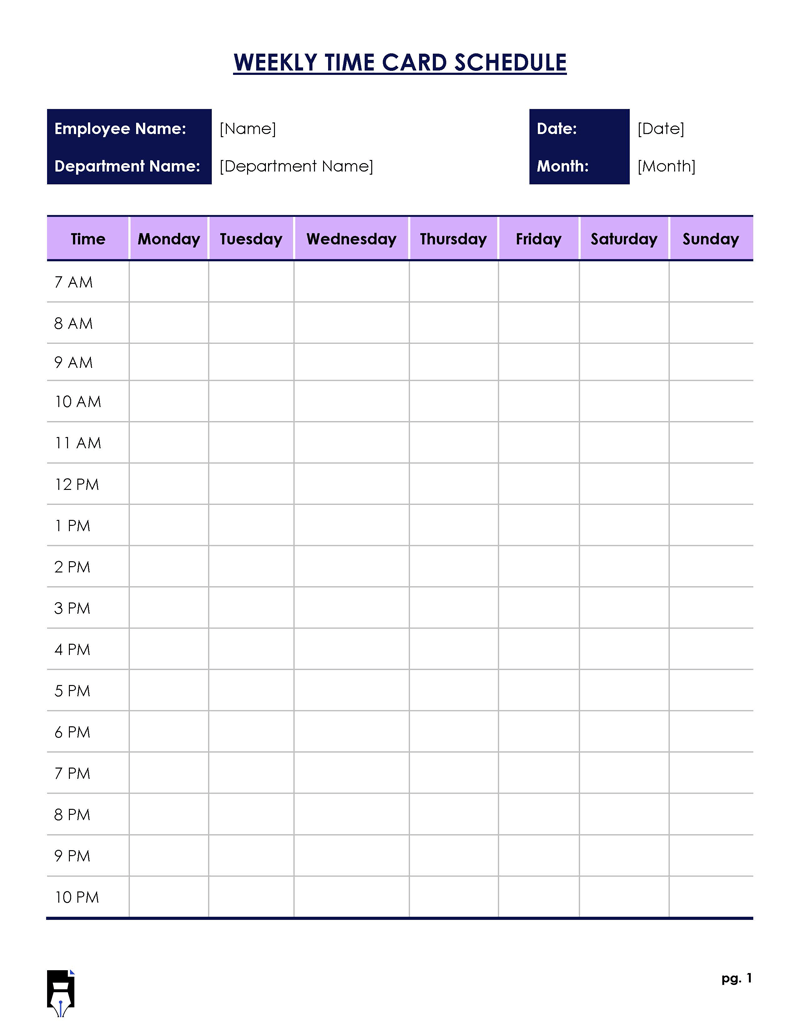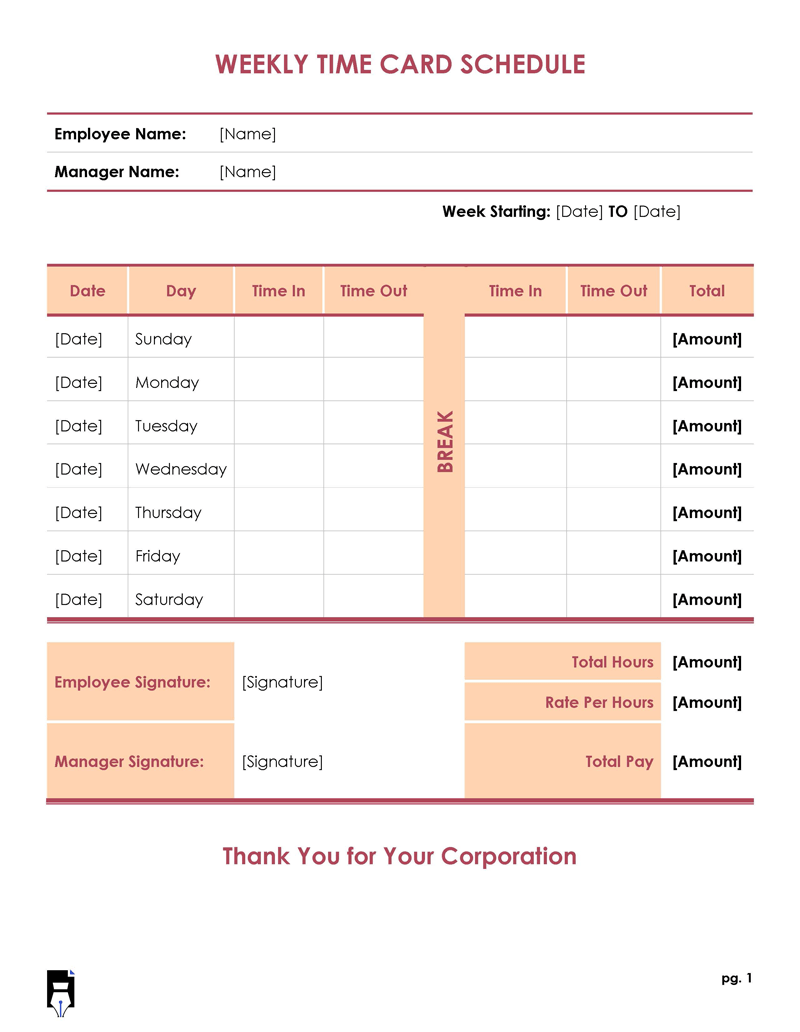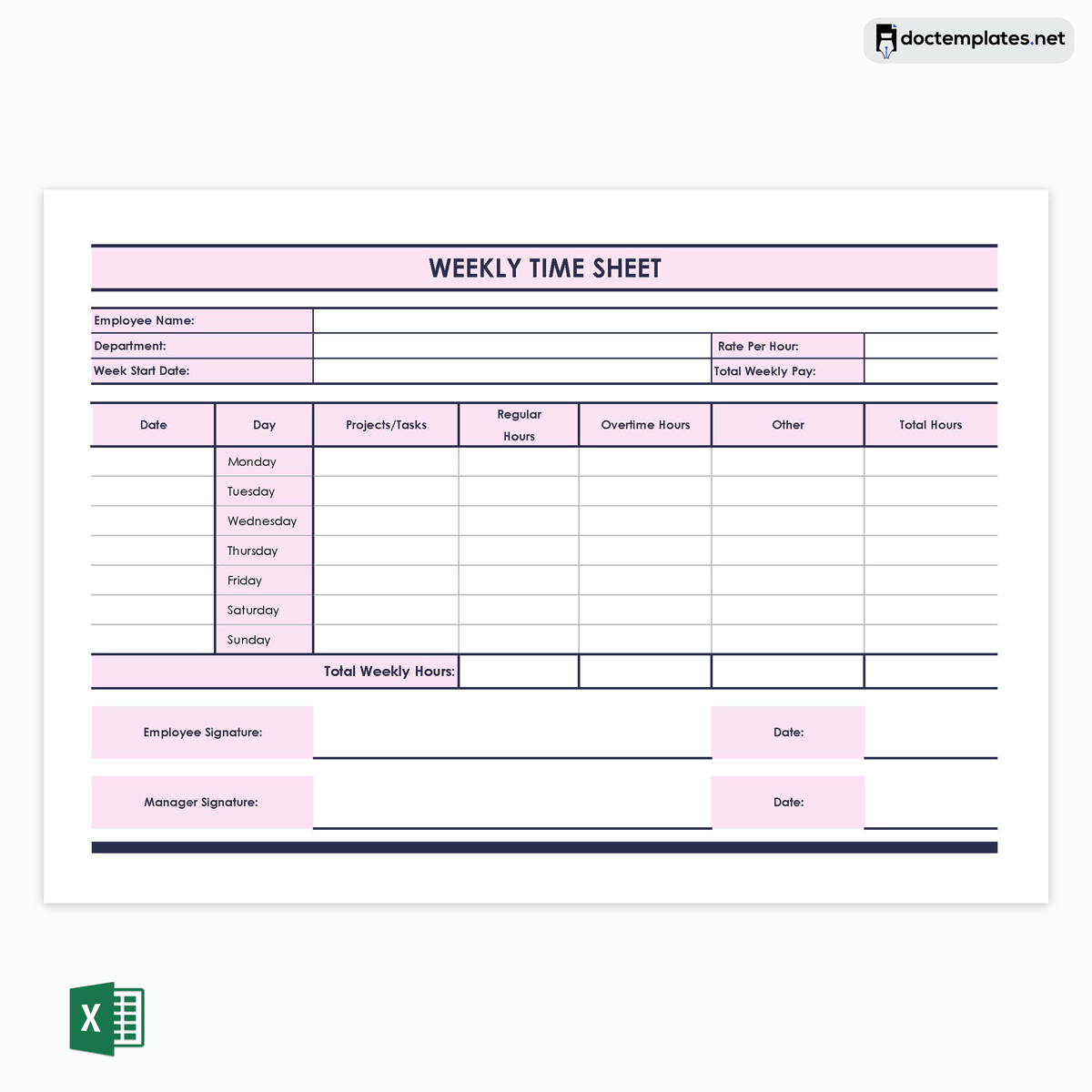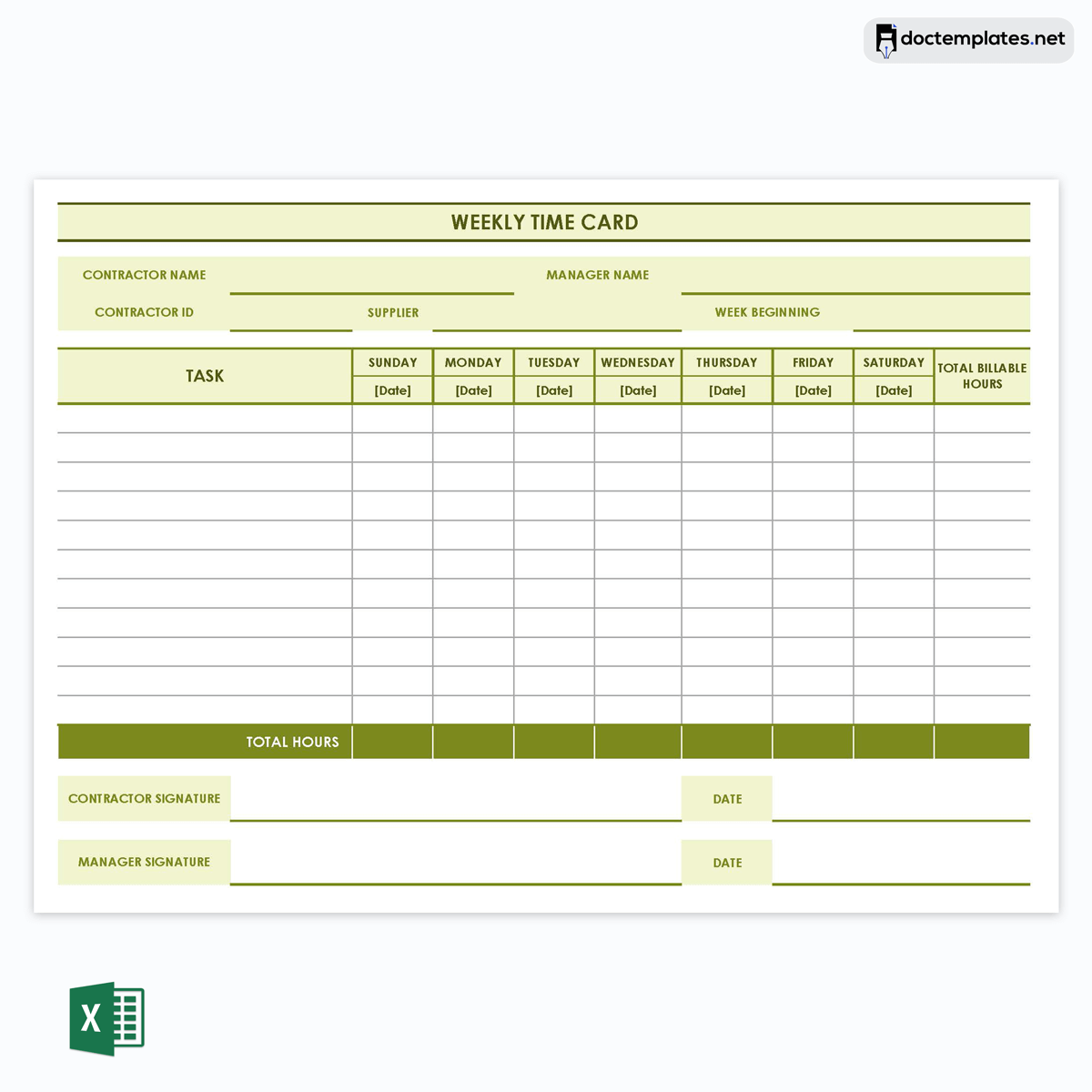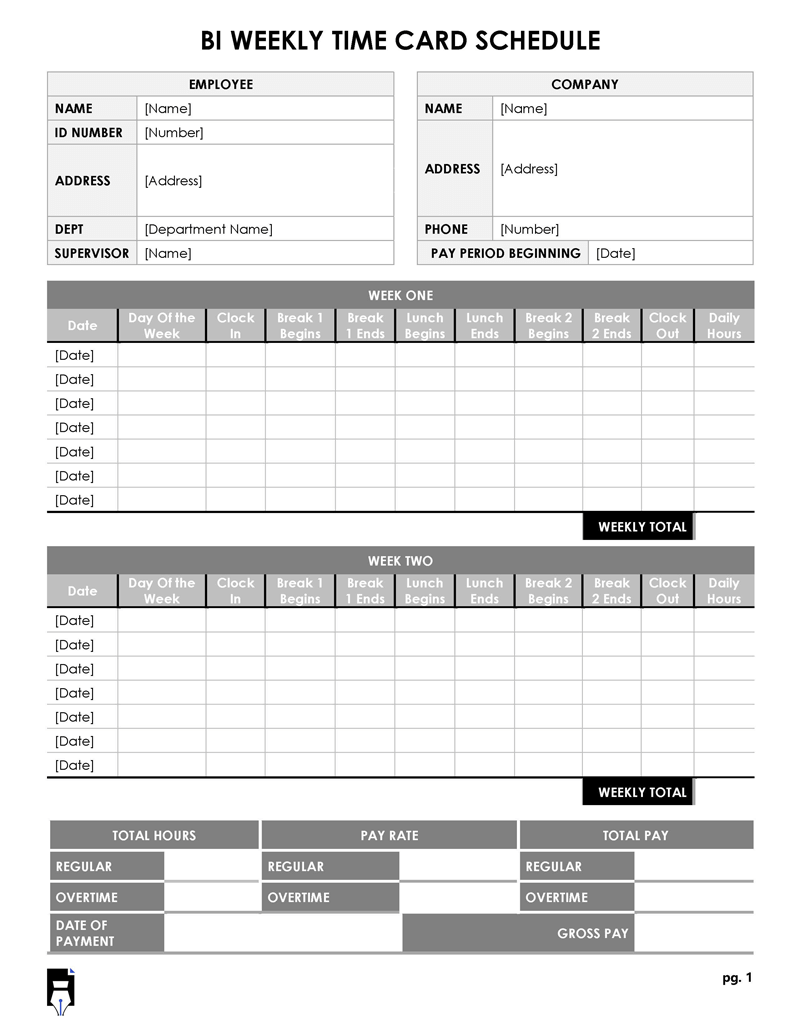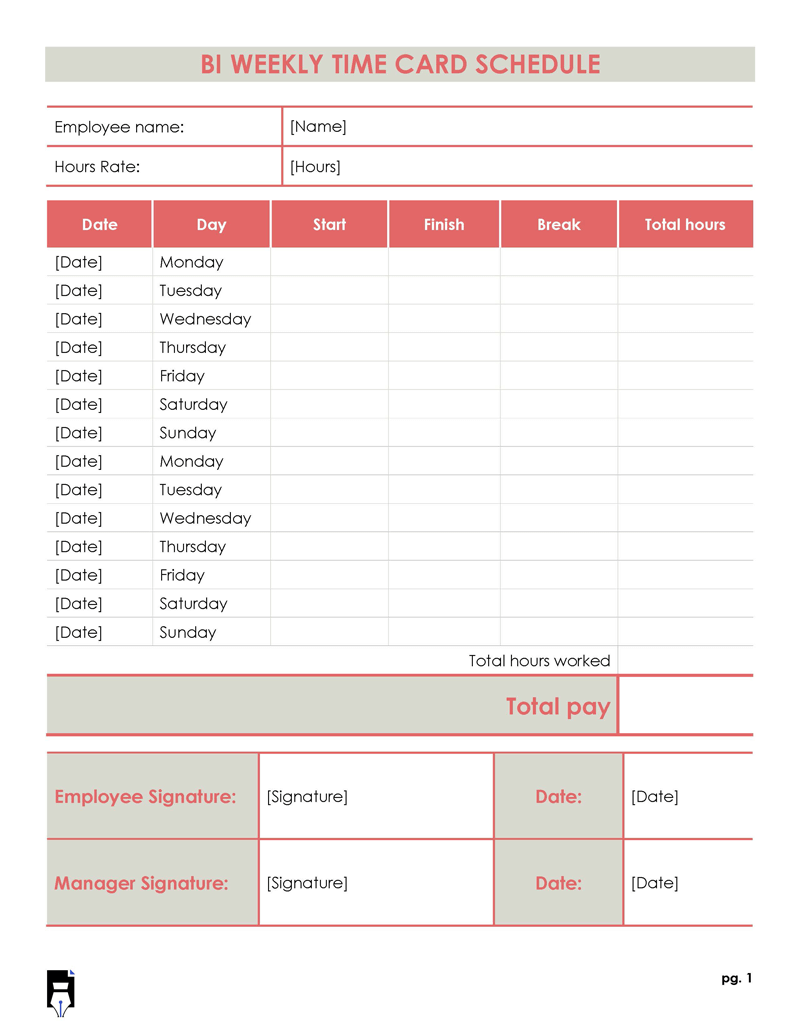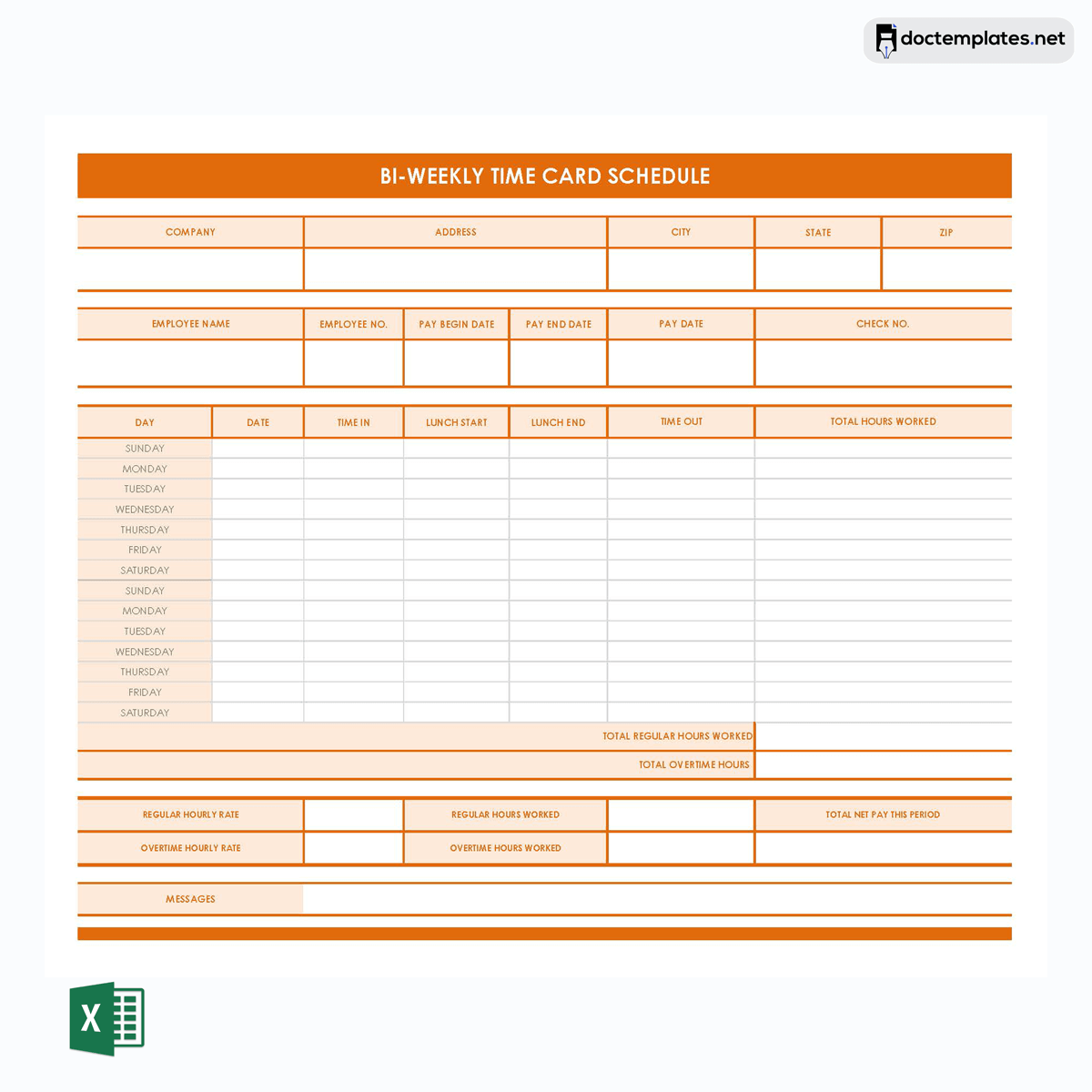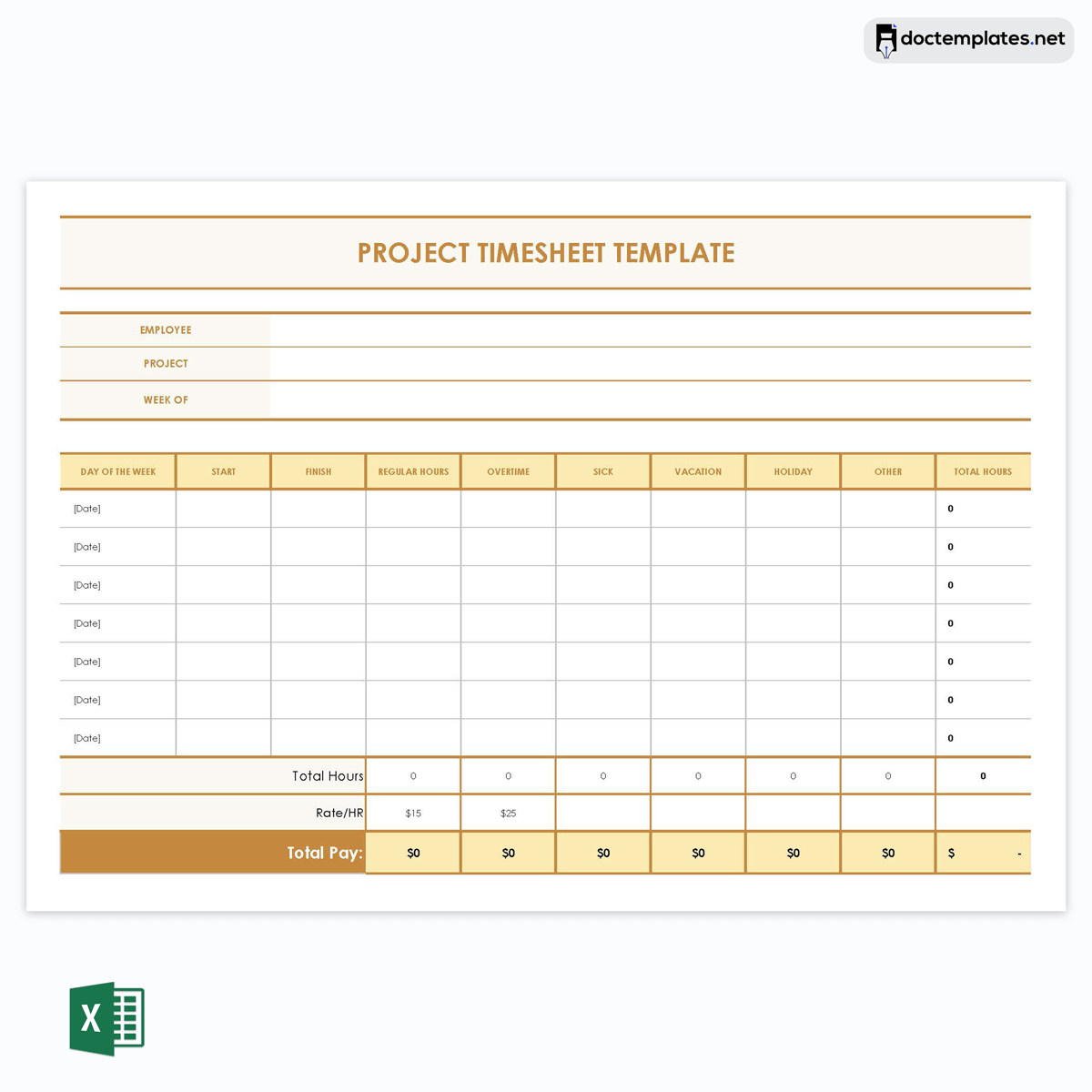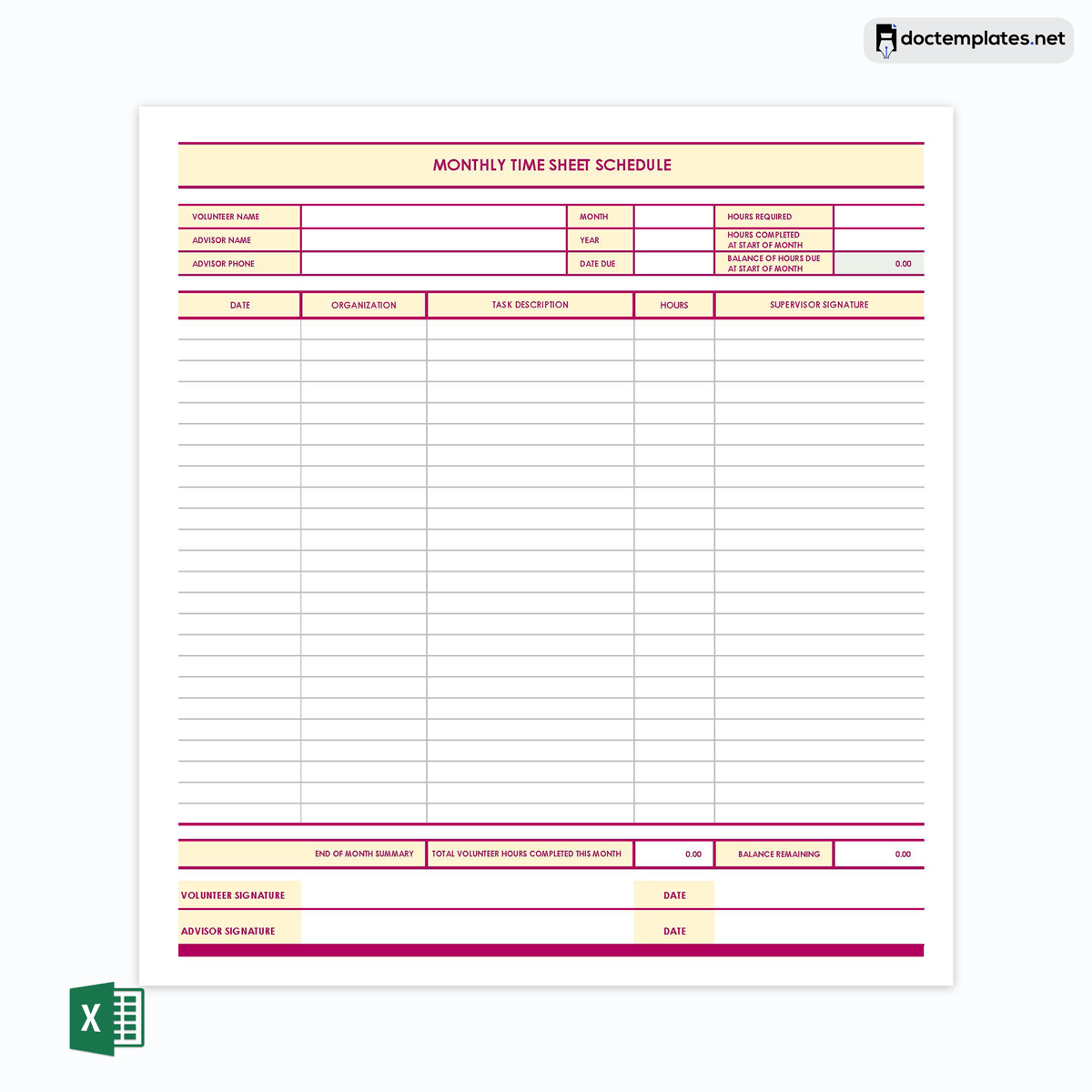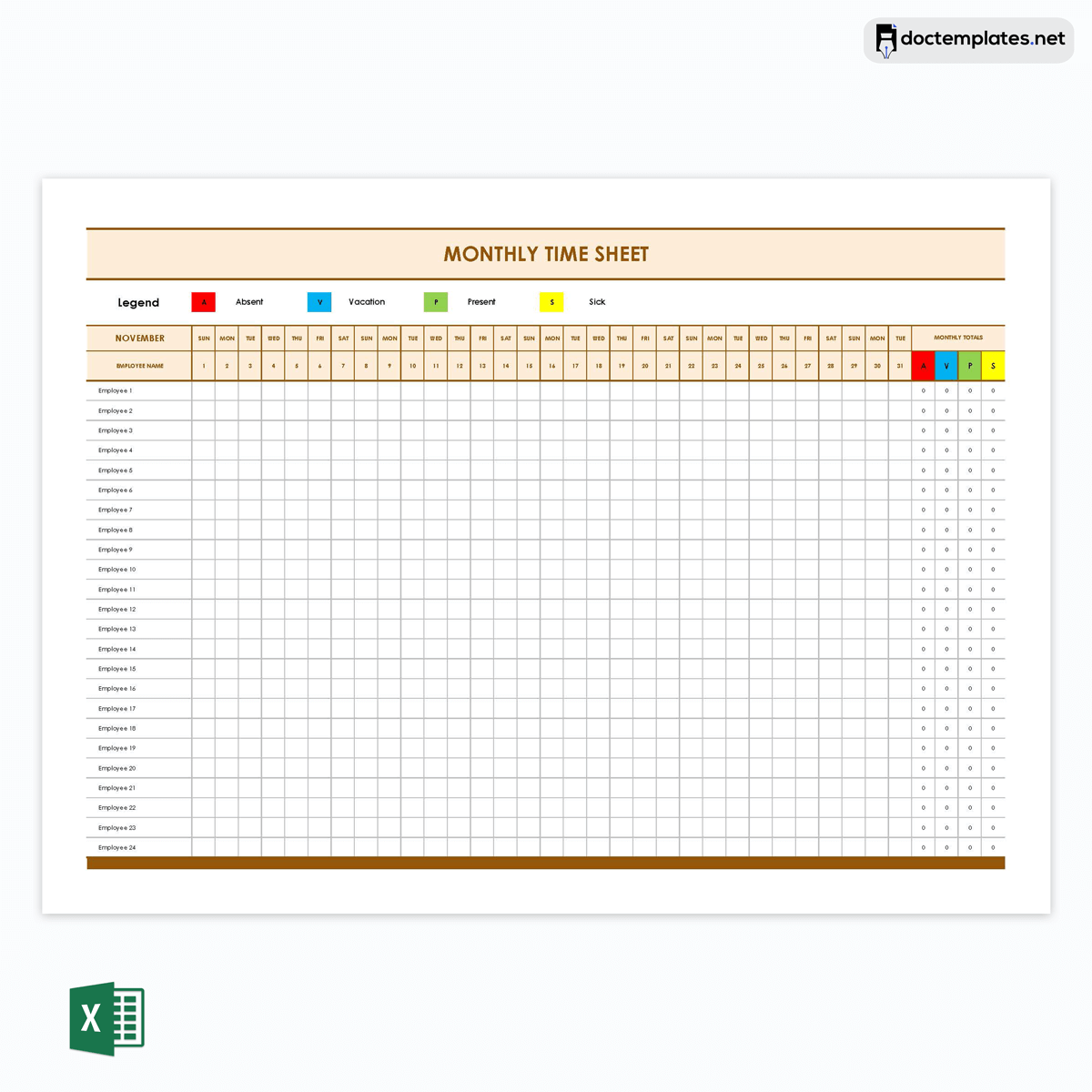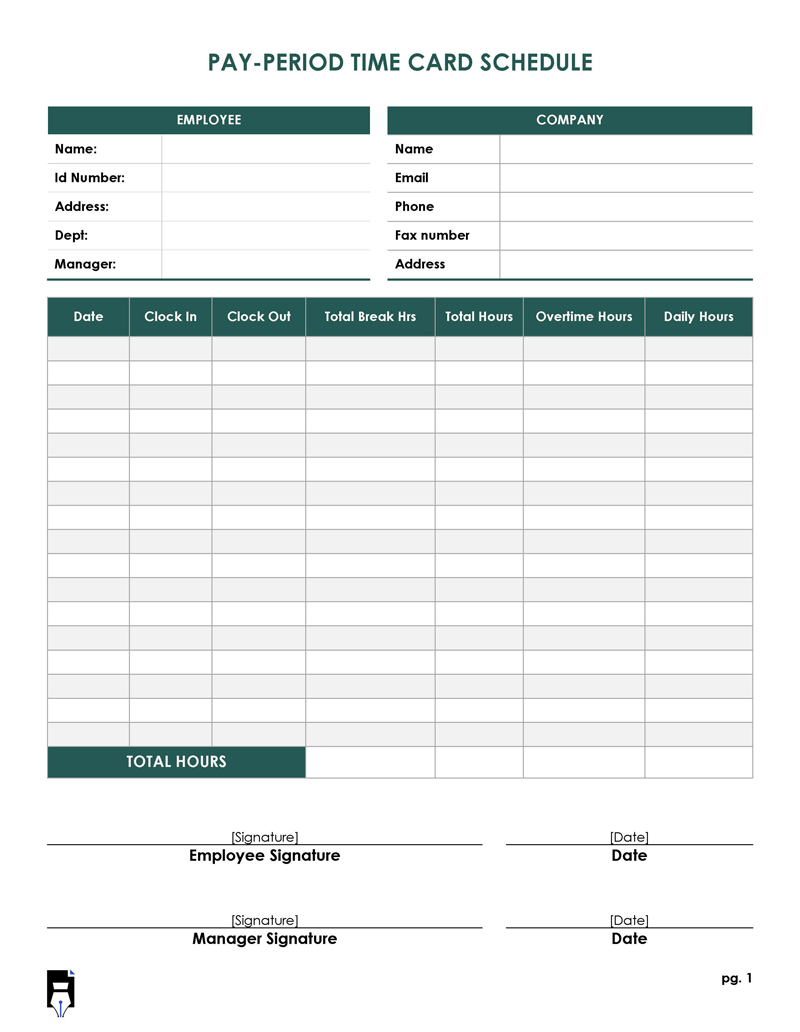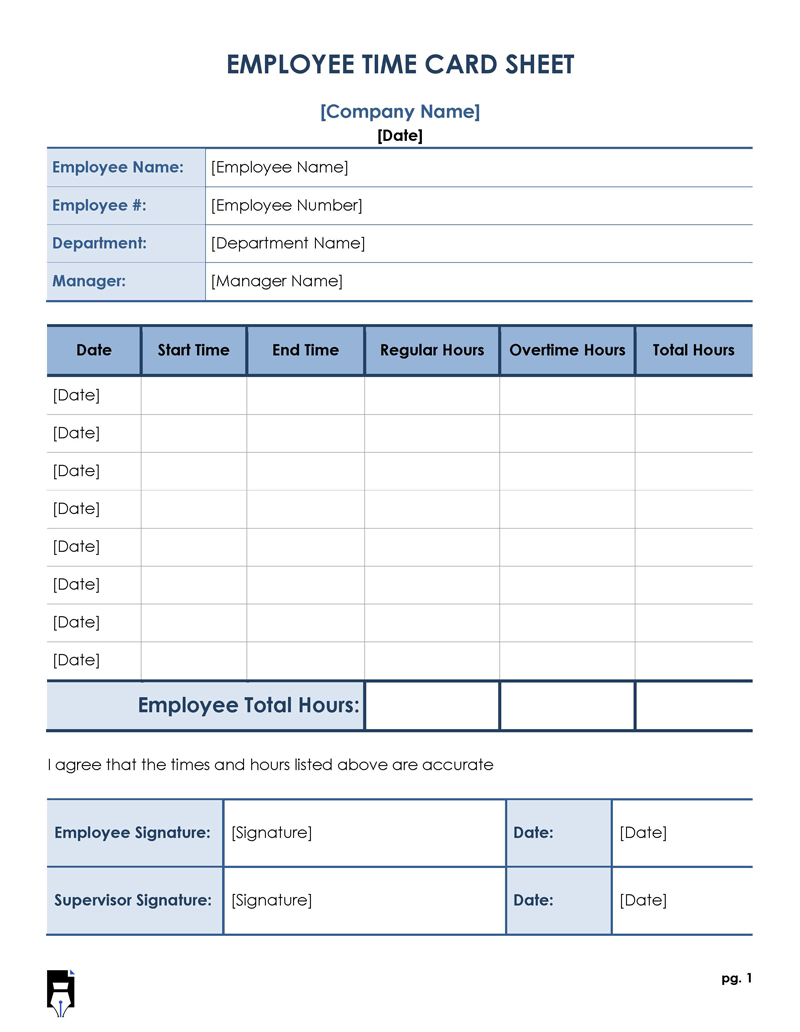The first employee time clock, developed in the late 1800s, was used to record when an employee reached and left the factory. This mechanical time clock would stamp the day and time on a heavy paper card. The term ‘timesheet’ was therefore coined.
It gives the factory owner an accurate record of each employee’s work hours. With advancements in technology, like the introduction of Excel, employee tracking became more sophisticated. However, the principle remains the same. Templates for creating timesheets remove the uncertainty in time tracking and enable employers to track their employees’ working hours. Attendance is one of the organizations’ most crucial metrics to measure productivity.
This article discusses the essentials to be included in a timesheet template and the benefits an employer will enjoy by using it. It also offers a guide on creating a sheet in Excel for tracking employees.
Free Templates
What is a Timesheet?
A timesheet is a document, usually a piece of paper the size of a notecard or full-length paper, used to record an employee’s work time.
It can be created using a template in Excel. The template has sections to record the employee’s name, the date, the hours the employee has worked each day, and the total amount of hours worked for the pay period. However, it may also include information about the employee’s duties, breaks taken, and any overtime performed.
Employers use templates for making timesheets to track employees’ work hours and calculate their pay. Employers may also use the card with a time clock or other system for tracking and recording employee attendance. It enhances the decision-making process and project execution. They also allow employers to determine whether employees are eligible for benefits, as labor and government regulations require.
How to Create a Timesheet in Microsoft Excel
With a computer, you can easily create your timesheet, especially if your staff has less than twenty employees. You can use templates to make your cards.
A step-by-step guide to creating a timesheet in Microsoft Excel is outlined below:
Step 1
On the bottom left corner of your computer screen, click on the Start Icon and open Excel. Alternatively, you may click on the Search box and then on the icon to open a new document.
Step 2
Click the Search Box and type “timesheet” to display the available templates. Select the document labeled ‘timesheet’ from the provided options and click Create. The template you have chosen will open as your new document.
Step 3
The first section of the template is meant to record the employee’s details. This information is needed for identification purposes. It can also be used to convey information to your employers. Enter your employee’s information by clicking on the appropriate cell in the Excel sheet. For example, click on cell C3 and cell G4 to type your employee’s street address and email address. Also, add the employee’s name in C2, the phone number in G3, the city and state ZIP code in C5, the manager’s name in G2, and the last date of the week in C6 as directed by the template.
Step 4
The template of the timesheet contains sections to record days and dates. This template is designed to automatically update the timesheet with the appropriate days and dates for the week by reading your computer’s time and date. This information is necessary for scheduling purposes. Dates are also used to track attendance to optimize operations accurately.
Step 5
Enter your employee’s standard hourly rate into cell D18 of Excel. Type your employee’s overtime, sick, and vacation pay rates into cells E18, F18, and G18. The day and date are needed to track when an employee reports working. The number of regular hours and overtime data is used to calculate the employee’s pay. The sick or vacation columns indicate whether the employee used a specific day as leave. The number of hours an employee registers in a single day calculates the total payment they are entitled to for the particular days.
Step 6
The template must capture the number of hours each employee has worked. Your employee’s daily hours should be recorded in its corresponding cell. For example, if your employee worked 12 hours and three were overtime hours, type “9” in the Regular Hours column and “3” in the Overtime Hours Column. You may also enter Sick and Vacation hours if necessary. The Excel template has formulas that calculate the total number of hours worked and the total pay. Accurate pay is necessary for proper accounting. Also, such information is needed to bill accurately.
Step 7
On the top menu, click on Page Layout. Click on the Themes ribbon and select a theme that will modify the fonts and colors of your Excel template. This is because the formatting is a vital factor to make the card effective. You should select professional fonts and colors to ensure the template is legible and presentable.
Step 8
On the top menu, select File and click Save on the left pane to save your card. You should save the worksheet with the appropriate title, for example, “Company X Timesheet Template.”
Step 9
Select File on the top menu and click on Print. On the copies dialogue box, specify the number of copies you require and click Print to print your card. Printing the card in landscape orientation is advisable to ensure all the information fits on one page.
Advantages and Limitations of Using a Timesheet
A template offers employers and employees precision when tracking payroll hours; nonetheless, it promotes a dynamic that can limit innovation and encourage employees to count the hours until they leave.
Highlighted below are some advantages and disadvantages of timesheets:
Advantages
As an employer, using a timesheet accords numerous benefits. Therefore, you can manage your staff more efficiently. The following are specific advantages of using a timesheet:
- Using a template to track employee attendance gives you a straightforward way of creating timesheets to calculate your employees’ work hours. This ensures that you only pay your employees for their work hours, thus eliminating fraudulent or inflated time claims. More importantly, they are typically easy to use and do not require any specialized training or knowledge.
- By using timesheets, employers can measure the most productive schedules of each employee. They can adjust the schedule to allow for maximum productivity. Therefore, they help increase security by eliminating the need to monitor employees.
- Timesheets ease the process of analyzing attendance as copies of the timesheets can be stored for future reference.
- Using templates to create timesheets can streamline the payroll process by automating the tasks involved. For example, some timesheet systems may be integrated with payroll software, which can automatically calculate pay based on the hours recorded on the timesheet. This can save time and lessen the risk of errors, as the data is entered directly into the payroll system rather than manually entered.
- Organizations can streamline and improve administrative procedures since timesheets allow them to analyze where labor resources are spent. They help ensure that your employees are paid accurately and on time by precisely tracking their work hours. This can be an important factor in employee satisfaction and help encourage employees to remain connected with your organization.
- Timesheets can help you identify patterns of absenteeism or lateness among your employees, such as frequently missing work or consistently reporting late. They allow you to set attendance thresholds, such as maximum absences per month, and alert you when an employee exceeds these thresholds.
- Time cards allow organizations to oversee the assistance of employees, breaks, delays, or overtime work. This also allows employees to measure the value of their work and how it translates to their compensation. The use of swiping timesheets helps organizations save time as clocking in or out is done quickly.
- Timesheets significantly reduce administrative employees’ workload, such as those of hiring managers, by automating the time-tracking process. Since every employee is required to fill out a timesheet, no employee will feel discriminated against or prejudiced, thus increasing productivity.
- Information provided through templates when tracking attendance is especially beneficial for project stakeholders. Clients, customers, or investors can know how much time and resources are dedicated to specific projects or activities. This can help improve communication between the company and the client by providing a clear and transparent work record.
Limitations
Efficient as they may be, the use of timesheets also has its own set of limitations. The following are some limitations presented by the use of time cards:
- Since much of the time tracking process involves paper, collecting time cards from employees may be time-consuming. This is especially difficult if an organization has a large workforce.
- Time card systems may be expensive, especially if they involve hardware such as time clocks or biometric scanners. There may also be ongoing costs for maintenance and support. This could raise concerns about cost efficiency and potentially impact the overall management strategy of the organization.
- Manual entry within templates when crafting time cards may be error-prone, as it relies on manual data entry and calculations. This can increase the risk of errors or mistakes, leading to incorrect pay or attendance records, and may require additional time and effort to correct. This can be a tedious and repetitive process for large or complex organizations.
- Using a template to prepare time cards may lead to underpaying or overpaying employees if not completed correctly. They may also be altered or tampered with. Employees can use this to inflate the number of hours worked or cover for absenteeism. This can lead to inaccurate records and may result in employees being overpaid or underpaid.
- A time card may be unsuitable for an organization with remote or field employees working at different locations daily.
- Time cards entered manually may not be integrated with other systems, such as payroll or project management software. This can make it challenging to track and analyze data and may require additional manual steps to obtain the information needed.
Conclusion
If you are among the millions of organizations that use Excel templates to create timesheets for tracking your employees’ work hours, you know how time-consuming it can be to account for every hour of their day. Since monitoring their time might be tedious, they are necessary to make this tracking easier. Almost every profession and industry has quantified the value of labor in shifts, hours, and minutes since the advent of the clock. These measurements are made possible by time cards.
In modern timesheets, employers can track their employees’ work hours and pay them for the exact amount of hours they have worked. The guidelines given in this article will streamline the process of tracking employee time/attendance using templates in Excel. You can therefore save time and devote it to other vital issues.
